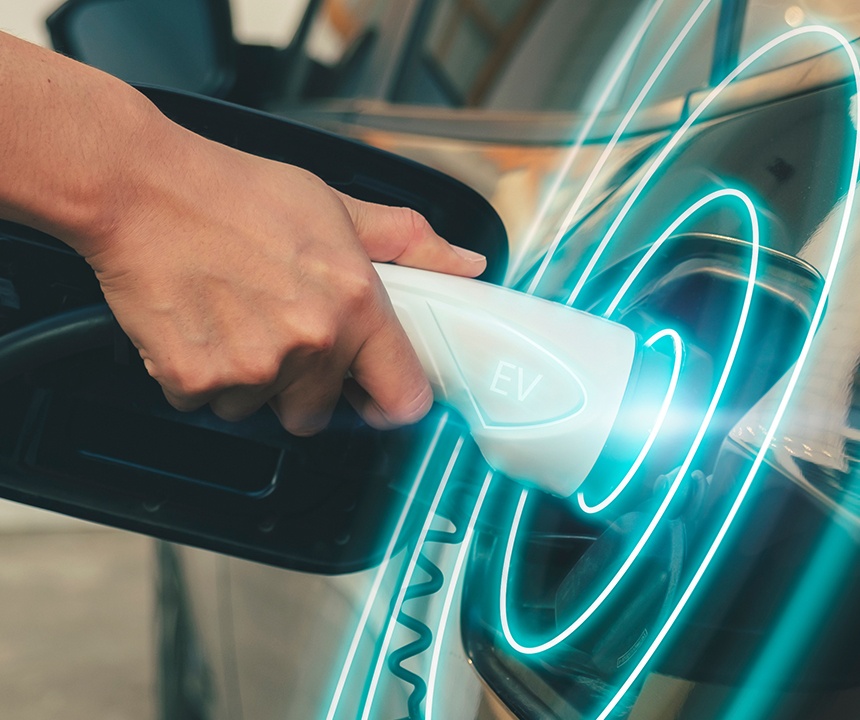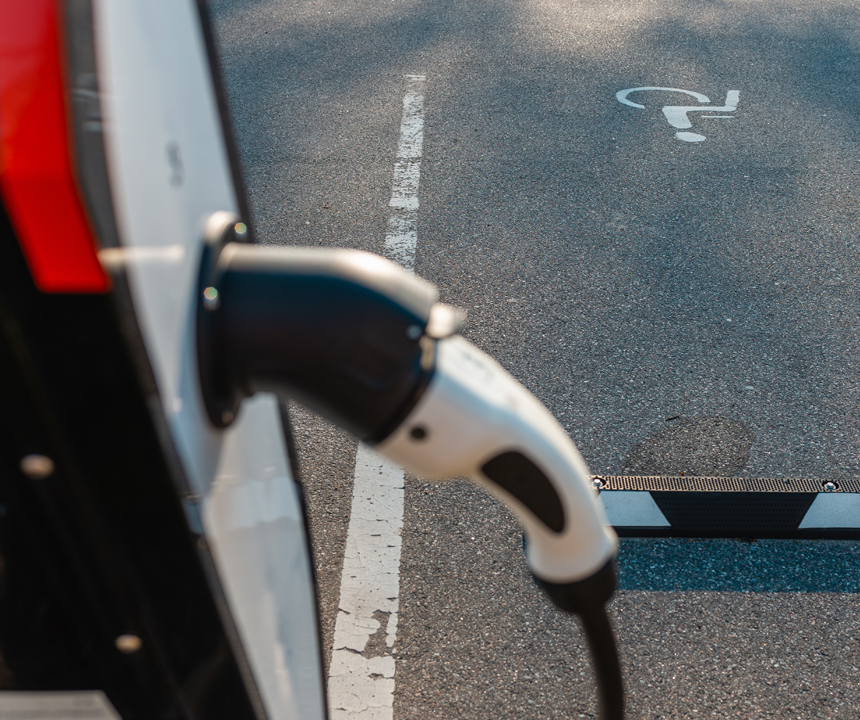Charging Basics
Learn the difference between Level 2 and direct current fast chargers (DCFC) at Electric Vehicle Charging 101.

Assessing Demand
Determining potential demand for EV charging at your property is the first step in EV charging planning. Understanding the needs of your driving community will inform both the type and number of EV charging stations to install.
There are various ways to assess charging demand. Surveying employees, residents, or customers at your property is one reliable method. The survey should help you understand how many people need EV charging access now, or are likely to in the future. Review the Department of Commerce's Mapping Tool to evaluate the proposed site's charging demand, as measured by parking utilization rates and dwell time. Check out the Simple EV Charging Demand Survey for sample questions to get started.

Assessing Capacity
Once you evaluate EV charging demand, you can assess your property's capacity to power EV charging infrastructure. Consult facilities or maintenance personnel, or an electrician familiar with the property's electrical system, to gather information on:
- Location(s) of existing electrical panels throughout the property, particularly relative to parking locations
- Output voltage for existing electrical panels (120/208, 120/240, or 480 volts)
- Approximate current loads on existing electrical panels
- Approximate excess capacity of each existing electrical panel
- Available space in the room or area where an existing electric panel is located - you may need space for additional electrical equipment, like a step-down transformer, subpanel, or disconnects
Once you have a clear idea of EV charging demand and existing electrical system capacity, you can estimate whether there is sufficient excess electrical capacity to serve your current and future charging needs.
You have a few options if your property does not have sufficient existing electrical capacity:
- Upgrade existing electrical service
- Establish new electrical service supply
- Pursue load management strategies to reduce the capacity needed to provide EV charging installation

Obtaining Local Permits
Your electrical and site construction permitting costs are eligible for reimbursement through the Washington EV Charging Program.
EV charging stations statewide must be permitted by the relevant authority having jurisdiction (AHJ), which may be a local government agency, or a tribal government if the charging station is on tribal land. Installations must comply with all other relevant federal, state, and local codes and regulations, including the Americans with Disabilities Act. Applicants can use the online directory of jurisdictions in Washington to begin planning.
Permit application documents, procedures, and inspection timelines vary by AHJ, and sufficient time must be included in a project timeline to meet all requirements and monitor applications.
It’s important to communicate with permitting authorities early in project design. Work closely with permitting authorities throughout the project lifecycle to ensure applications and installations comply with all relevant regulations.
Applicants should retain records of permit applications, inspection reports, and other documents to support their application.
Visit the Washington State Department of Labor & Industries for information on:
- Processing times, permit purchasing and submittal, and permitting office contact information
- Cities that issue permits and perform inspections within their boundaries, and their contact information
Many jurisdictions have online permitting websites where users can access the updates on their permit, inspection, and related resources.
Placing Your EV Charging Installation
You should consider several factors to determine where to install EV charging stations:
- Minimize the distance from the point of power connection to the EV charging station to lower installation costs.
- Place EV charging stations near buildings where people are most likely to use it.
- Run power to EV charging stations in surface mounted conduit, often acceptable in parking garages, or through landscaped areas, to avoid expensive asphalt and concrete trenching.
- Account for federal, state, and local accessibility requirements from the beginning of your project to prevent costly redesign surprises.
Accessibility Requirements
EV charging stations installed in parking spaces open to visitors or the public are required to ensure equitable access to all users. These requirements are governed by the federal Americans with Disabilities Act (ADA). Use of the Access Board’s design guidelines is encouraged for program-funded projects.
The Washington State Building Code also makes specific provisions for public EV parking spaces, like ADA and van-accessible spaces in commercial and public parking lots. These standards provide a framework for ensuring full EV charging station accessibility.
At least one van-accessible EV parking space is required to comply with the ADA for any amount of EV charging available to the public. This is an important consideration for property owners. Accessible parking spaces have larger dimensions than regular parking spaces, as well as access aisles and accessible paths of travel. This may reduce the total number of parking spaces in a parking lot or garage.

Obtaining Additional Capacity for EV Charging Installations
You have two options if your site's available electrical capacity is inadequate for the EV charging load you want to serve:
- Upgrade existing electrical service - Electrical service upgrades may be most appropriate as part of a larger electrical or other property rehabilitation project. Replacing a building’s main service entrance and panel requires coordination between the property owner, the city issuing the permit, and the local utility provider. This may leave a facility without power while the main switchgear and panels are replaced. This option can be costly and may trigger other corrective electrical work.
- Establish a new electrical service supply - You may consider adding an additional service drop to the property. Although the electrical code generally favors a single electrical connection point, exceptions exist for specific situations (NEC 232). For example, most municipalities allow additional service drops to sites that host cellular telecom equipment. Similar new service arrangements could support EV charging without requiring modifications to existing building supply. A new service entrance could be located close to the parking area where the power is needed, allowing EV charging to be segregated to its own utility meter. That may create freedom to choose the most suitable utility rate for EV charging.
